Artists
‘The Water Is a Washing Away’: The Salvation of Calida Rawles’s Aquatic Portraits
The artist's first solo museum show in the United States is on view at the Pérez Art Museum Miami.
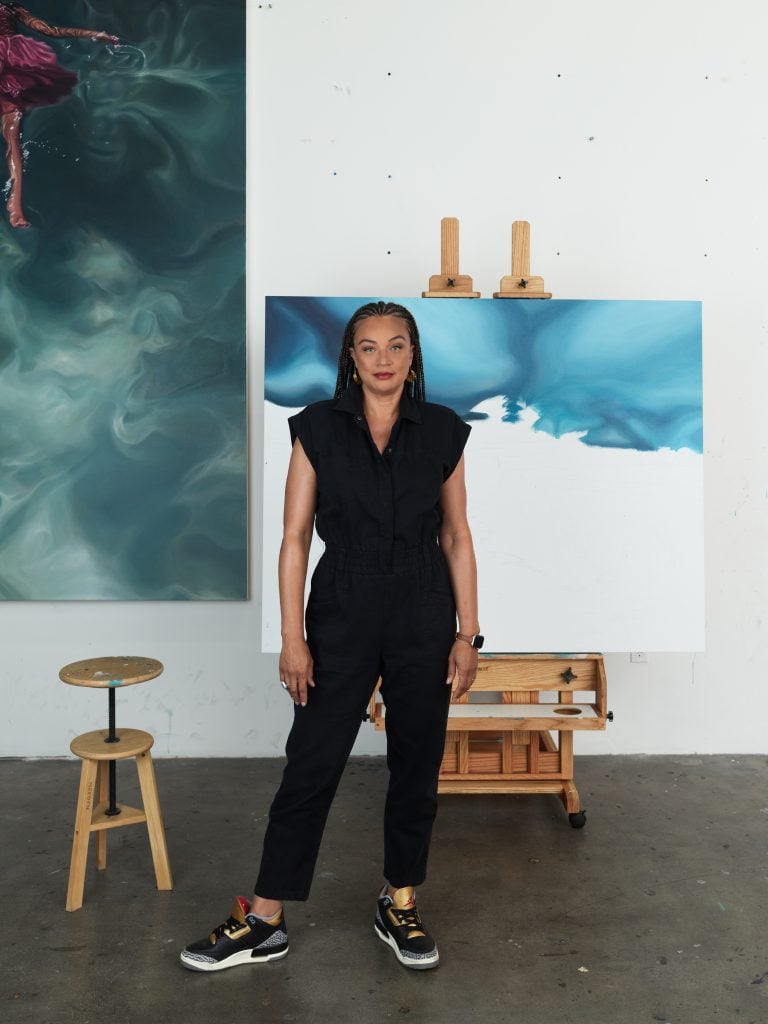
“Ms. Rolle didn’t have a car, so I offered to pick her up for her photo shoot,” Calida Rawles explained, when describing the process of getting her new subjects together for her solo exhibition “Away With The Tides“, at the Pérez Art Museum Miami (PAMM).
For the show, the LA-based artist chose to pay tribute to the people of Overtown, an area just north of Downtown Miami that was known as the Harlem of the South during the Harlem Renaissance.
They include Rolle, a well-respected figure who has lived in the neighborhood long enough to see it undergo relentless economic and societal challenges. The area has been fractured by planned segregation, gentrification, and displacement, particularly when a slice of the I-95 interstate highway was introduced through the center of the district in the late 1950s.
“I felt it there,” Rawles said, upon first visiting the area. “I felt their community. They were taking care of each other, and it was beautiful. The community isn’t broken, even though it may appear that way from the outside,” she explained. “Our country has a history of looking at a community that is not financially thriving and think that they’re deprived of love for each other.”
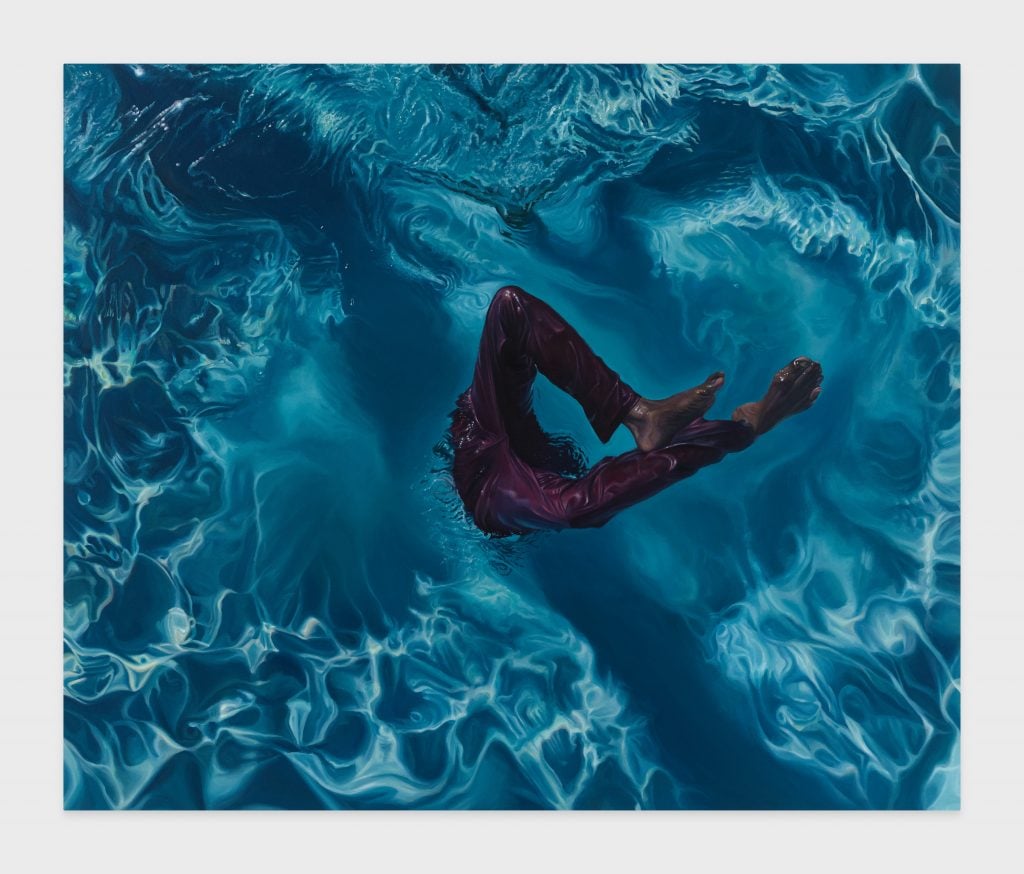
Calida Rawles, Impact (2024) (detail). Courtesy the artist and Lehmann Maupin, New York, Seoul, and London. Photo: Marten Elder.
In this site-specific show, Rawles portrays her subjects floating or playing in historic water locations, either in one of the two public swimming pools for Black swimmers or at Virginia Key Beach, once the only beach accessible for Black visitors during segregation. The photo shoot there would be some of the residents’ very first visit to the Atlantic Ocean, the very body of water that defines some of their city’s limits.
The painter is best known for her images of Black subjects in bodies of water—relaxing, floating, diving, drifting, dressed in either white or bright colors. When her subjects’ faces are visible they are smiling or serene. Anxieties dissolve in the water; their immersion resembling a baptism or purification ritual.
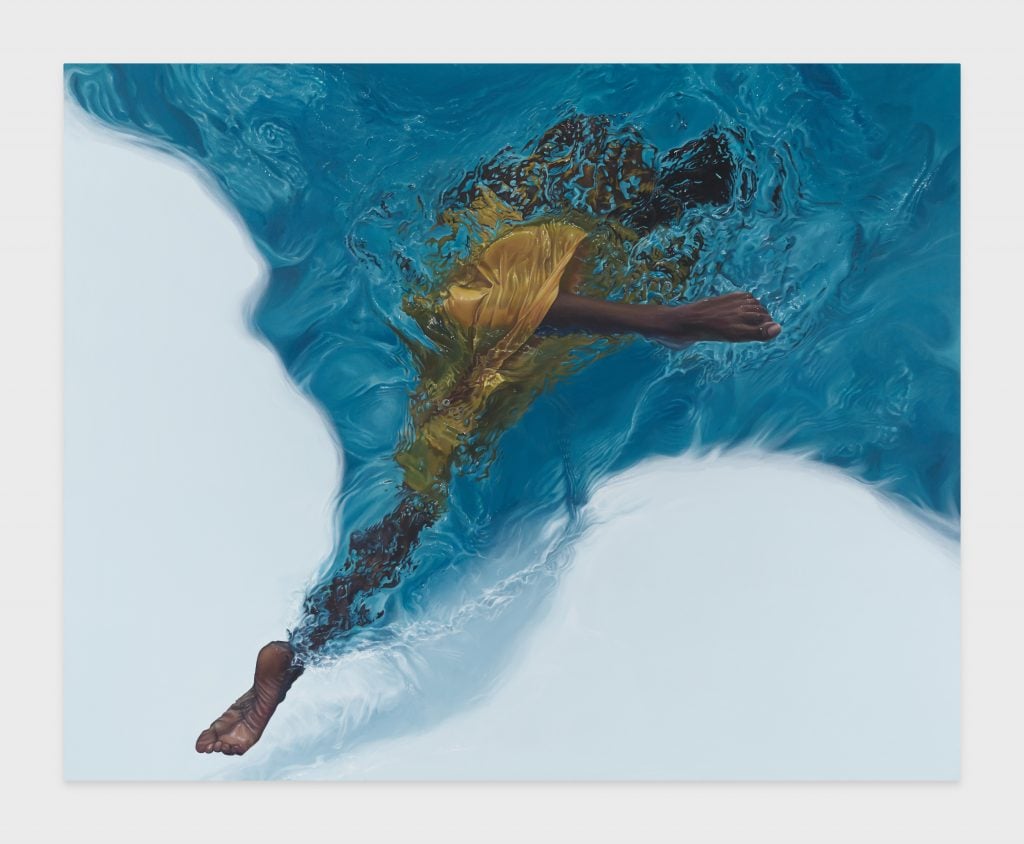
Calida Rawles, Away with the Tides (2024). Courtesy the artist and Lehmann Maupin, New York, Seoul, and London. Photo: Marten Elder.
“Water is spiritual, religious,” she explained from her studio, which is in the West Adams neighborhood of Los Angeles. Her bodies, both human and aquatic, have a luminous sheen that comes from building up an iridescent layer of acrylic paint. Her technique brings it closer to a watercolor than oil finish, which she describes as the point where water reflects light.
Light and water also hold reverential, otherworldly dimensions that show up on her surfaces. “The water is a washing away. You have to be trustful in the water. You have to be confident. It’s like having faith. Spirituality is always coming out of my work, and so I wanted to capture that here, too,” she added.

Installation view, “Calida Rawles: Away With the Tides” at Pérez Art Museum, Miami, 2024. Photo: Lazaro Llanes.
Rawles paid special attention to the acclaimed Ms. Rolle while painting her. “I wanted the work with her to feel intimate, and to just think of time in a different form.” A small cluster of paintings offers a close-up on Ms. Rolle’s foot skimming the water on the beach. “The water hits this disjointed body at this moment in time. I felt this love from her, so I painted her in a few small paintings where you [as a viewer] weave in and out, get closer, step away and then look back into the ocean at different times. It’s like she’s breaking away, or being washed away.”
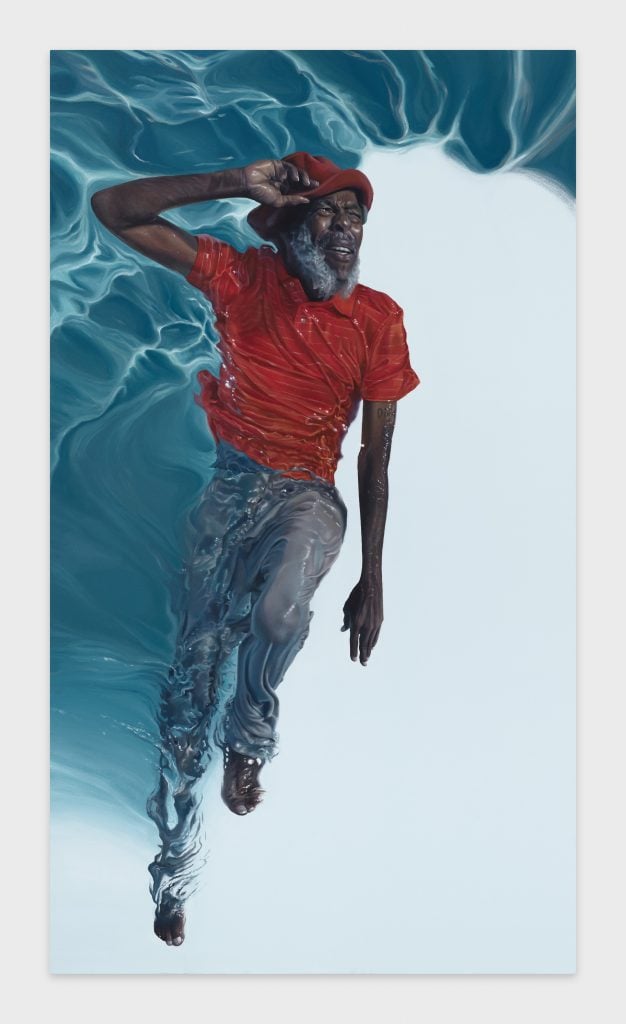
Calida Rawles, To See What It Is (2024). Courtesy the artist and Lehmann Maupin, New York, Seoul, and London. Photo: Marten Elder.
The city’s political landscape forms a layer in the portraits as well. “Thinking about what’s happening in Florida, especially with the banning of books, I thought, ‘How do the Black people feel in Florida?’ AP Black History Studies can’t be taught there. What do they think? What do they feel?” the artist explained.
The questions led to an anchoring for the PAMM show. She described how she, “became fascinated with the history of Overtown, a community that was once economically and socially thriving. Then they put a highway right in the middle of it, which is a very common American story for Black communities. The prices are going up in that area and some of [the residents] are not sure where they’re going to live next. They’ve already been displaced; is it really going to happen again?”
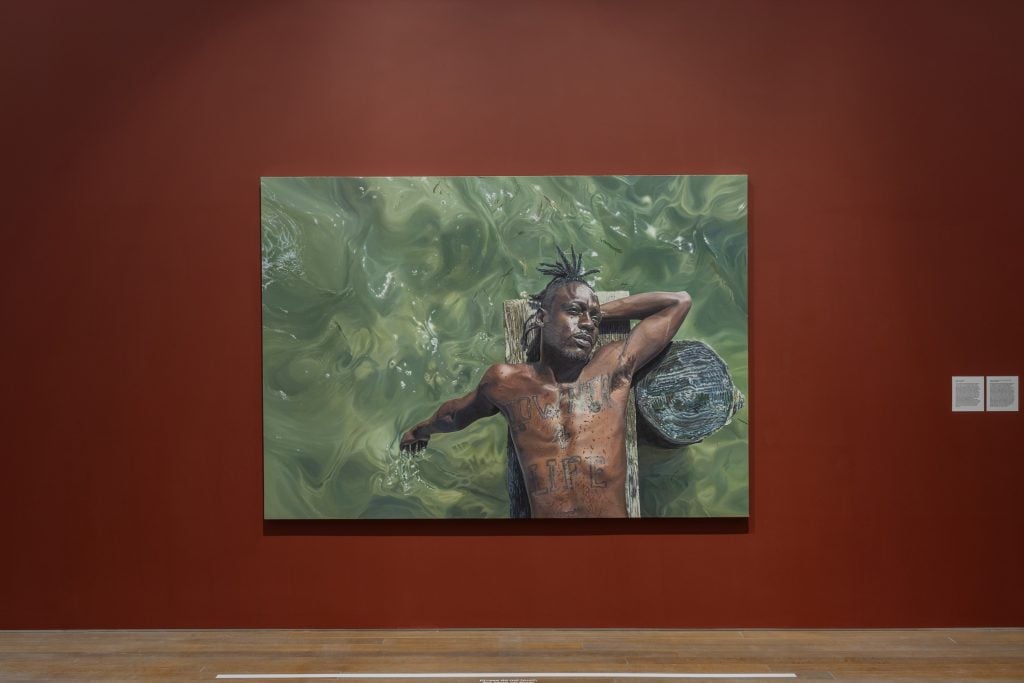
Installation view, “Calida Rawles: Away With the Tides” at Pérez Art Museum, Miami, 2024. Photo: Lazaro Llanes.
Once the artist decided to paint figures from the neighborhood, she went to Miami for two weeks with her family. She set up shoots with local personalities, dressing them in a tropical palette: dancers, Ms. Rolle, the Towner for Life, a young man with Overtown tattooed prominently across his torso, all feature. “That’s how the show came to be, through my love for this community, and how connected they all are,” she said. To fully portray the liveliness of Overtown and the making of the exhibition, the show will also include the artist’s first video work. This documentary was made in collaboration with producer Laura Brownson and Tony-nominated composer Justin Ellington.
“I want members of the community to walk into the show and be so proud and happy,” Rawles said. “They’re bound to this place, even though it’s been shattered.”





